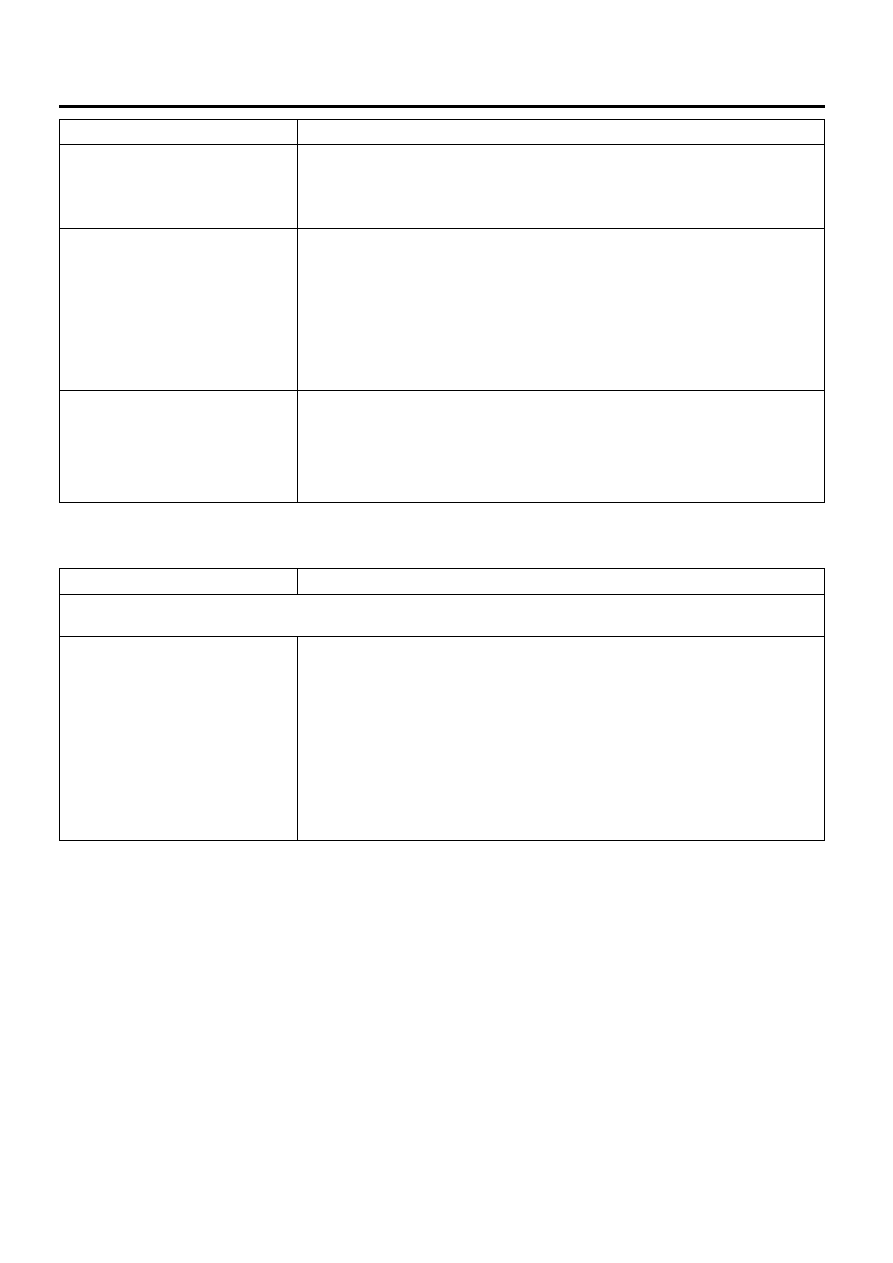Isuzu N-Series. Manual - part 724

6E-318 Engine Control System (4HK1)
Surges / Chuggles
Exhaust System Checks
Inspect the exhaust system for a possible restriction. Refer to the Exhaust System
section.
• Inspect the exhaust brake valve for a stuck closed position.
• Inspect for a restriction in the exhaust pipes.
Engine Mechanical Checks
Inspect the engine mechanical for the following conditions. Refer to the Engine
Mechanical section.
• Inspect for poor cylinder compression. Proper compression is more than 1960 kPa
(284 psi) and variation of each cylinder is less than 294 kPa (43 psi).
• Improper valve timing
• Improper valve gap
• Broken or weak valve springs
• Worn camshaft lobes
Additional Checks
• Inspect the generator output voltage.
• Electromagnetic interference (EMI) on the reference circuit can cause an engine
miss condition. The Tech 2 can usually detect EMI by monitoring the engine speed.
A sudden increase in speed with little change in actual engine speed change
indicates that EMI is present. If a problem exists, check routing of high voltage
components, such as fuel injector solenoid wiring, near the sensor circuits.
Checks
Action
DEFINITION: The engine has a power variation under a steady throttle or cruise. The vehicle seems to speed up and slow
down with no change in the accelerator pedal.
Preliminary Checks
• Diagnostic System Check – Engine Controls.
• Ensure the driver understands the A/C compressor operation.
• Use the Tech 2 in order to make sure the Vehicle Speed parameter reading
matches the vehicle speedometer.
• Inspect the engine control module (ECM) grounds for being clean, tight, and in their
proper locations.
• Inspect that the harness connectors are correctly connected.
• Inspect the fuel type and quality.
• Inspect the programmed fuel injector ID code for each cylinder.
• Inspect the Tech 2 Data List in this section.
Checks
Action